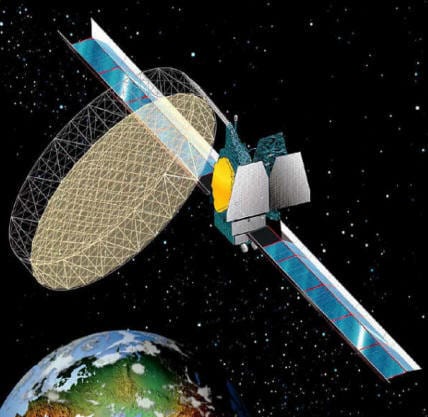The three orbit domains that can serve our planet are all in active use and new concepts continue to be examined and pursued. Geostationary earth orbit (GEO) supports major businesses in satellite video and radio broadcasting as well as data and mobile communications. The medium earth orbit (MEO) and low earth orbit (LEO) configurations can also be used for various applications needing low latency for broadband and narrowband interactive communications on a global basis. ATS is very familiar with all of the elements and subsystems that comprise modern satellites used to develop, operate and integrate them into a responsive whole. This understanding extends to the component level and builds through systems to the system to meet the special needs of communications payloads operating in space. We have contributed to the development and operation of several major programs and systems, including those employed in commercial and government environments.
Any communications satellite is composed of this communications payload (repeater and antenna system) and its supporting spacecraft bus (solar array and batteries, attitude and orbit control system, structure and thermal control system), and is placed in orbit by a launch vehicle. The Space Segment also includes the tracking, telemetry and command (TT&C) station or stations, and a satellite control center. A successful satellite operator needs the right orbit slots or constellation, and satellites that deliver effective power and bandwidth to desirable regions and markets (those with growing demand for space segment services). Moreover, these payloads incorporate digital processors and multi-beam antenna structures along with bandwidth and network management solutions to direct the resources to areas of demand.

Satellite System Engineering and Program Management. With over forty years of experience in communications satellite program management, engineering and operations, we are in a unique position to assist buyers of satellites and satellite capacity. We know both sides of this equation (e.g., the buyer of the satellite and the seller of spacecraft or bandwidth) from having lived it ourselves; and we can therefore guide the program or business in the following areas:
- An architecture for the space segment, considering the capabilities of modern satellite systems and user terminals
- Communications payload requirements definition, design and detailed specification
- Spacecraft vehicle and bus subsystems and how these are meshed with the payload to meet mission requirements
- Overall satellite definition and technical specification (system and subsystem)
- Procurement and implementation management
- Negotiation of specifications, statement of work, and contractual terms and conditions
- Satellite capacity identification, planning and acquisition
- Satellite system design and management
- RF link analysis, transponder utilization, and throughput optimization
- Technology assessment and insertion, including digital processing, optical links, array antennas and autonomous operation
- Due diligence of a particular technology and acquisition target
- International frequency coordination and spectrum management
The overall design of the payload, satellite, ground segment and end-to-end system is a complex task, involving all of the areas cited above and several others of a highly technical nature. ATS provides know-how relative to each of the primary contributors to the performance, reliability and cost of the satellite and resulting service. Satellite communications payload design must be properly coupled with the capabilities and interaction with the spacecraft bus that provides power, stability and environmental support to the payload.